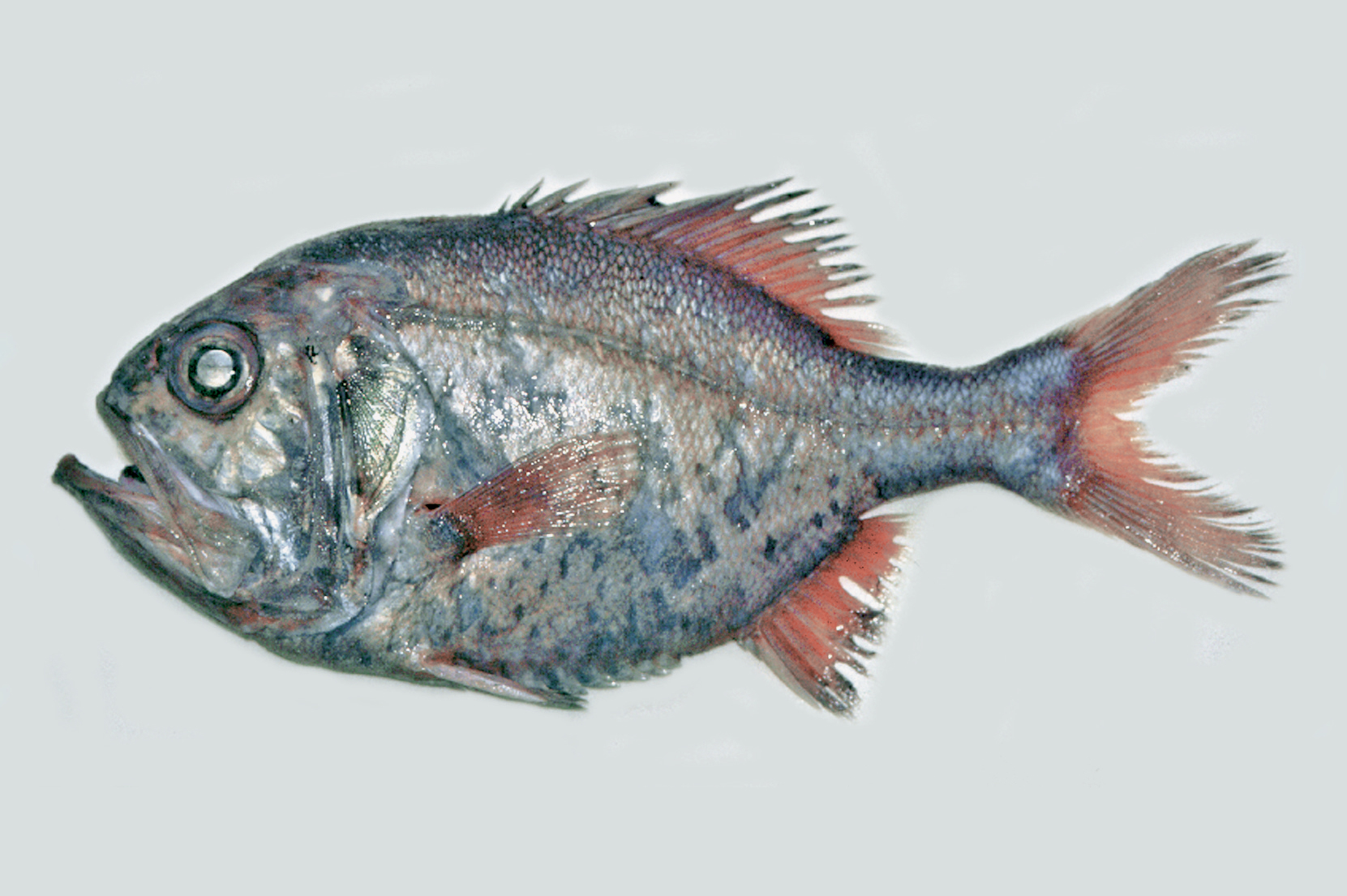Giant Sawbelly, Hoplostethus gigas McCulloch 1914

A Giant Sawbelly, Hoplostethus gigas, from SW of Portland, Victoria, depth 432-522 m, 9 June 2000. Source: Martin F. Gomon / Museum Victoria. License: CC by Attribution
A large rare deepwater roughy found only in southern Australia.
Identifying features:
• Head
and body deep greyish-orange to greyish-red, gill cover dark greyish-red
• Mouth
cavity and gill openings black
• Vomer,
underside of tongue and upper surface of lower jaw stark white
• Fins
deep red with grey membranes between dorsal-fin spines; soft dorsal and anal fins, and caudal fin with greyish to blackish outer margins.
Giant Sawbelly, Hoplostethus gigas McCulloch 1914
More Info
|
Distribution |
Endemic to southern Australia from the western part of the Great Australian Bight (126°47' E) to SW of Portland, Victoria (141°44' E) in depths of 188-522 metres. The Giant Sawbelly inhabits canyons and areas with hard rough bottom. |
|
Features |
Meristic features: |
|
Size |
A large species, the largest specimen examined 426 mm SL; reported to 525 mm SL (McCulloch, 1914). |
|
Colour |
Fresh specimens: head and body a deep greyish-orange to red; opercle dark greyish-red; buccal cavity and opercular recess black; vomer, underside of tongue and upper surface of lower jaw stark white; fins deep red; membranes between dorsal fin spines grey, marginal strip on soft portions of dorsal, anal and caudal fins dark grey to almost blackish in large individuals. In preservative: slightly dusky above, pale below; opercle dark; buccal and branchial chambers dark, including gill arches and rakers; vomer, palatines, underside of tongue and lower jaw uniformly pale; medial fins and pelvic fins dusky near outer edges. |
|
Biology |
Although nothing is known of the biology of this species, like other deepwater roughies, the Giant Sawbelly is likely to be very slow to mature and very long-lived. |
|
Conservation |
|
|
Similar Species |
This is the largest Australian roughy, and is easily separated from other species by its large size and a combination of 9–15 predorsal scales, 9–10 enlarged abdominal scutes, 15 (rarely 14) pectoral–fin rays, and 18 total gill rakers. |
|
Author |
Martin F. Gomon |




